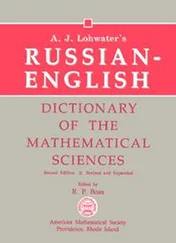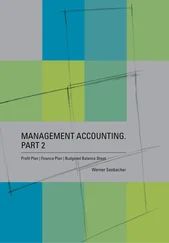Amir Sadr - Mathematical Techniques in Finance
Здесь есть возможность читать онлайн «Amir Sadr - Mathematical Techniques in Finance» — ознакомительный отрывок электронной книги совершенно бесплатно, а после прочтения отрывка купить полную версию. В некоторых случаях можно слушать аудио, скачать через торрент в формате fb2 и присутствует краткое содержание. Жанр: unrecognised, на английском языке. Описание произведения, (предисловие) а так же отзывы посетителей доступны на портале библиотеки ЛибКат.
- Название:Mathematical Techniques in Finance
- Автор:
- Жанр:
- Год:неизвестен
- ISBN:нет данных
- Рейтинг книги:5 / 5. Голосов: 1
-
Избранное:Добавить в избранное
- Отзывы:
-
Ваша оценка:
- 100
- 1
- 2
- 3
- 4
- 5
Mathematical Techniques in Finance: краткое содержание, описание и аннотация
Предлагаем к чтению аннотацию, описание, краткое содержание или предисловие (зависит от того, что написал сам автор книги «Mathematical Techniques in Finance»). Если вы не нашли необходимую информацию о книге — напишите в комментариях, мы постараемся отыскать её.
Mathematical Techniques in Finance: An Introduction
Mathematical Techniques in Finance: An Introduction
Mathematical Techniques in Finance — читать онлайн ознакомительный отрывок
Ниже представлен текст книги, разбитый по страницам. Система сохранения места последней прочитанной страницы, позволяет с удобством читать онлайн бесплатно книгу «Mathematical Techniques in Finance», без необходимости каждый раз заново искать на чём Вы остановились. Поставьте закладку, и сможете в любой момент перейти на страницу, на которой закончили чтение.
Интервал:
Закладка:
Description: Hoboken, New Jersey : John Wiley & Sons, Inc., [2022] | Series: Wiley finance series | Includes index.
Identifiers: LCCN 2022000565 (print) | LCCN 2022000566 (ebook) | ISBN 9781119838401 (cloth) | ISBN 9781119838425 (adobe pdf) | ISBN 9781119838418 (epub)
Subjects: LCSH: Finance–Mathematical models.
Classification: LCC HG106 .S23 2022 (print) | LCC HG106 (ebook) | DDC 332.01/5195–dc23/eng/20220112
LC record available at https://lccn.loc.gov/2022000565
LC ebook record available at https://lccn.loc.gov/2022000566
Cover Design: Wiley
Cover Image: © StationaryTraveller/Getty
To my students
Preface
Finance as a distinct field from economics is generally defined as the science or study of the management of funds. The creation of credit, savings, investments, banking institutions, financial markets and products, and risk management all fall under the purview of finance. The unifying themes in finance are time, risk, and money.
Mathematical or quantitative finance is the application of mathematics to these core areas. While simple arithmetic was enough for accounting and keeping ledgers and double‐entry bookkeeping, Louis Bachelier's doctoral thesis, Théorie de la spéculation and published in 1900, used Brownian motion to study stock prices, and is widely recognized as the beginning of quantitative finance. Since then, the use of increasingly sophisticated and specialized mathematics has created the modern field of quantitative finance encompassing investment theory, asset pricing, derivatives, financial data science, and the emerging area of crypto assets and Decentralized Finance (DeFi).
BACKGROUND
This book is the collection of my lecture notes for an elective senior level undergraduate course on mathematics of finance at NYU Courant. The mostly senior and some first year graduate students come from different majors with an even distribution of mathematics, engineering, economics, and business majors. The prerequisites for the book are the same as the ones for the course: basic calculus, probability, and linear algebra. The goal of the book is to introduce the mathematical techniques used in different areas of finance and highlight their usage by drawing from actual markets and products.
BOOK STRUCTURE
A simple definition of finance would be the study of money; quantitative finance could be thought of as the mathematics of money . While reductive and simplistic, this book uses this metaphor and follows the money across different markets to motivate and introduce concepts and mathematical techniques.
Bonds
In Chapter 2, we start with the basic building blocks of interest rates and time value of money to price and discount future cash flows for fixed income and bond markets. The concept of compound interest and its limit as continuous compounding is the first foray into mathematics of finance. Coupon bonds make regular interest payments, and we introduce the Geometric series to derive the classic bond price‐yield formula.
As there is generally no closed form formula for implied calculations such as implied yield or volatility given a bond or option price, these calculations require numerical root‐solving methods and we present the Newton‐Raphson method and the more robust and popular bisection method.
The concept of risk is introduced by considering the bond price sensitivity to interest rates. The Taylor series expansion of a function provides the first and second order sensitivities leading to duration and convexity for bonds in Chapter 2, and delta and gamma for options in Chapter 6. Similar first and second order measures are the basis of the mean‐variance theory of portfolio selection in Chapter 3.
In the United States, households hold the largest amount of net worth, followed by firms, while the U.S. government runs a negative balance and is in debt. Most of consumer finance assets and liabilities are in the form of level pay home mortgage, student, and auto loans. These products can still be tackled by the application of the Geometric series, and we can calculate various measures such as average life and time to pay a given fraction of the loan via these formulas. A large part of consumer home mortgage loans are securitized as mortgage‐backed securities by companies originally set up by the U.S. government to promote home ownership and student loans. The footprint of these giants in the financial markets is large and is the main driver of structured finance. We introduce tools and techniques to quantify the negative convexity risk due to prepayments for these markets.
While the analytical price‐yield formula for bonds, loans, and mortgage‐backed securities can provide pricing and risk measures for single products in isolation, a variety of bonds and fixed income products trade simultaneously in markets giving rise to different yield and spread curves. We introduce the bootstrap and interpolation methods to handle yields curves and overlapping cash flows of multiple instruments in a consistent manner.
Stocks, Investments
In Chapter 3, we focus on investments and the interplay between risk‐free and risky assets. We present the St. Petersburg paradox to motivate the concept of utility and to highlight the problem of investment choice, ranking, and decision‐making under uncertainty. We introduce the concept of risk‐preference and show the personalist nature of ranking of random payoffs. We present utility theory and its axioms, certainty‐equivalent lotteries, and different measures of risk‐preference (risk‐taking, risk‐aversion, risk‐neutrality) as characterized by the utility function. Utility functions representing different classes of Arrow‐Pratt measures (CARA, CRRA, HARA) are introduced and discussed.
The mean‐variance theory of portfolio selection draws from the techniques of constrained and convex optimization, and we discuss and show the method of Lagrange multipliers in various calculations such as the minimum‐variance portfolio, minimum‐variance frontier, and tangency (market) portfolio. The seminal CAPM formula relating the excess return of an asset to that of the market portfolio is derived by using the chain rule and properties of the hyperbola of feasible portfolios.
Moving from equilibrium results, we next introduce statistical techniques such as regression, factor models, and PCA to find common drivers of asset returns and statistical measures such as the alpha and beta of portfolio performance. Trading strategies such as pairs trading and mean‐reversion trades are based on these methods. We conclude by showing the use of recurrence equations and optimization techniques for risk and money management leading to the gambler's ruin formula and Kelly's ratio.
Forwards, Futures
In Chapter 4, we introduce the forward contract as the gateway product to more complicated contingent claims and options and derivatives. The basic cash‐and‐carry argument shows the method of static replication and arbitrage pricing. This method is used to compute forward prices in equities with discrete dividends or dividend yields, forward exchange rate via covered interest parity, and forward rates in interest rate markets.
Risk‐Neutral Option Pricing
Chapter 5presents the building blocks of the modern risk‐neutral pricing framework. Starting with a simple one‐step binomial model, we flesh out the full details of the replication of a contingent claim via the underlying asset and a loan and show that a contingent claim's replication price can be computed by taking expectations in a risk‐neutral setting. This basic building block is extended to multiple steps through dynamic hedging of a self‐financing replicating portfolio, leading to martingale relative prices and the fundamental theorems of asset pricing for complete and arbitrage‐free economies.
Читать дальшеИнтервал:
Закладка:
Похожие книги на «Mathematical Techniques in Finance»
Представляем Вашему вниманию похожие книги на «Mathematical Techniques in Finance» списком для выбора. Мы отобрали схожую по названию и смыслу литературу в надежде предоставить читателям больше вариантов отыскать новые, интересные, ещё непрочитанные произведения.
Обсуждение, отзывы о книге «Mathematical Techniques in Finance» и просто собственные мнения читателей. Оставьте ваши комментарии, напишите, что Вы думаете о произведении, его смысле или главных героях. Укажите что конкретно понравилось, а что нет, и почему Вы так считаете.












